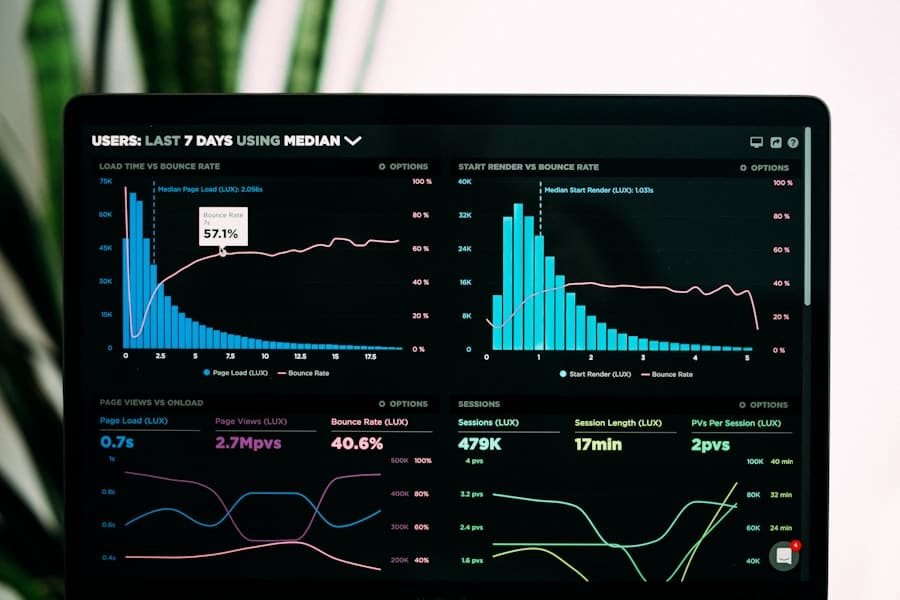In an era where data is often referred to as the new oil, the importance of data compliance has surged to the forefront of organisational priorities. As businesses increasingly rely on vast amounts of data for decision-making, marketing, and customer engagement, the need to adhere to various regulations governing data usage has become paramount. Data compliance automation emerges as a critical solution, enabling organisations to streamline their compliance processes while minimising the risk of breaches and penalties.
This article delves into the intricacies of data compliance automation, exploring its significance, functionality, benefits, and the challenges organisations may face in its implementation. The landscape of data compliance is complex and ever-evolving, influenced by a myriad of regulations such as the General Data Protection Regulation (GDPR) in Europe, the California Consumer Privacy Act (CCPA) in the United States, and various industry-specific standards. As these regulations become more stringent, organisations must not only ensure that they are compliant but also demonstrate their compliance through rigorous documentation and reporting.
This is where data compliance automation plays a pivotal role, offering tools and technologies that facilitate adherence to these regulations efficiently and effectively.
Summary
- Data compliance automation is the use of technology to streamline and simplify the process of ensuring that an organisation’s data practices comply with relevant laws and regulations.
- Data compliance is crucial for protecting customer privacy, maintaining trust, and avoiding costly fines and legal issues.
- Understanding data compliance automation involves knowing how to use technology to manage and enforce data protection policies, monitor data usage, and ensure compliance with regulations such as GDPR and CCPA.
- Implementing data compliance automation can lead to improved efficiency, reduced risk of non-compliance, and better protection of sensitive data.
- Data compliance automation works by using software to automate tasks such as data classification, access control, monitoring, and reporting, making it easier to manage and enforce data protection policies.
The Importance of Data Compliance
Data compliance is not merely a legal obligation; it is a fundamental aspect of building trust with customers and stakeholders. In an age where consumers are increasingly aware of their rights regarding personal data, organisations that fail to comply with data protection regulations risk damaging their reputation and losing customer loyalty. For instance, high-profile data breaches have led to significant financial losses and a decline in consumer confidence for companies like Equifax and Facebook.
These incidents underscore the necessity for robust data compliance strategies that not only protect sensitive information but also foster a culture of accountability within organisations. Moreover, non-compliance can result in severe financial penalties. Regulatory bodies are empowered to impose hefty fines on organisations that violate data protection laws.
For example, under GDPR, companies can face fines of up to €20 million or 4% of their global annual turnover, whichever is higher. Such financial repercussions can be devastating, particularly for small to medium-sized enterprises (SMEs) that may lack the resources to absorb such losses. Therefore, investing in data compliance is not just about avoiding penalties; it is about safeguarding the organisation’s future and ensuring sustainable growth.
Understanding Data Compliance Automation

Data compliance automation refers to the use of technology to streamline and enhance the processes involved in ensuring compliance with data protection regulations. This encompasses a range of activities, including data mapping, risk assessments, policy management, incident response, and reporting. By automating these processes, organisations can reduce the manual effort required to maintain compliance while increasing accuracy and efficiency.
At its core, data compliance automation leverages software solutions that integrate with existing systems to monitor data flows, assess risks, and generate reports. These tools can automatically identify potential compliance issues and provide recommendations for remediation. For instance, an automated system might flag instances where personal data is being stored without proper consent or where data retention policies are not being adhered to.
This proactive approach allows organisations to address compliance gaps before they escalate into significant issues.
Benefits of Implementing Data Compliance Automation
The implementation of data compliance automation offers numerous advantages that can significantly enhance an organisation’s ability to manage its compliance obligations. One of the most notable benefits is the reduction in manual workload. Compliance teams often find themselves inundated with repetitive tasks such as data entry, monitoring changes in regulations, and preparing reports for audits.
By automating these processes, organisations can free up valuable resources, allowing compliance professionals to focus on more strategic initiatives. Additionally, automation enhances accuracy and reduces the likelihood of human error. Manual processes are inherently prone to mistakes, which can lead to compliance failures and subsequent penalties.
Automated systems, on the other hand, operate based on predefined rules and algorithms, ensuring consistency in compliance efforts. For example, an automated tool can continuously monitor data access logs for anomalies that may indicate a breach or misuse of data, providing real-time alerts that enable swift action. Another significant benefit is improved visibility into compliance status.
Automated solutions often come equipped with dashboards and reporting features that provide insights into an organisation’s compliance posture at any given time. This transparency is invaluable during audits or regulatory reviews, as it allows organisations to demonstrate their commitment to compliance through comprehensive documentation and evidence of ongoing monitoring efforts.
How Data Compliance Automation Works
The functionality of data compliance automation typically involves several key components that work together to ensure adherence to regulatory requirements. Initially, organisations must conduct a thorough assessment of their existing data practices and identify areas where automation can be beneficial. This may involve mapping out data flows within the organisation to understand how personal information is collected, stored, processed, and shared.
Once the assessment is complete, organisations can implement automated tools that integrate with their existing systems. These tools often utilise artificial intelligence (AI) and machine learning algorithms to analyse vast amounts of data in real-time. For instance, an automated compliance solution might continuously scan databases for sensitive information and assess whether it is being handled in accordance with relevant regulations.
Furthermore, these systems can facilitate ongoing monitoring and reporting. Automated alerts can notify compliance teams of any deviations from established policies or regulatory requirements, enabling timely intervention. Additionally, automated reporting features can generate comprehensive reports that summarise compliance activities over specific periods, making it easier for organisations to demonstrate their adherence during audits.
Challenges and Considerations for Data Compliance Automation

While the benefits of data compliance automation are substantial, organisations must also navigate several challenges when implementing these solutions. One primary concern is the initial investment required for automation tools. Depending on the complexity of an organisation’s data environment and the specific requirements of applicable regulations, the costs associated with acquiring and integrating automated solutions can be significant.
Moreover, there is often a steep learning curve associated with new technologies. Employees may require training to effectively utilise automated systems and understand how they fit into broader compliance strategies. Resistance to change can also pose a challenge; staff accustomed to traditional manual processes may be hesitant to adopt new technologies that alter their workflows.
Another critical consideration is ensuring that automated solutions remain up-to-date with evolving regulations. Data protection laws are subject to change as new threats emerge and societal expectations shift. Organisations must establish processes for regularly reviewing and updating their automated systems to ensure continued compliance.
This may involve collaborating with legal experts or regulatory bodies to stay informed about changes in legislation.
Best Practices for Data Compliance Automation
To maximise the effectiveness of data compliance automation, organisations should adhere to several best practices throughout the implementation process. First and foremost, it is essential to conduct a comprehensive risk assessment before selecting an automation solution. This assessment should identify specific compliance requirements based on the organisation’s industry, geographical location, and types of data handled.
Engaging stakeholders from various departments—such as IT, legal, and operations—can provide valuable insights into potential challenges and requirements for automation. Collaboration across departments ensures that the chosen solution aligns with organisational goals while addressing specific compliance needs. Additionally, organisations should prioritise user training and support during the rollout of automated systems.
Providing employees with adequate training not only enhances their understanding of how to use the tools effectively but also fosters a culture of compliance within the organisation. Regular workshops or refresher courses can help keep staff informed about updates in both technology and regulatory requirements. Finally, establishing a feedback loop is crucial for continuous improvement.
Organisations should regularly review their automated processes and solicit feedback from users to identify areas for enhancement. This iterative approach allows organisations to adapt their compliance strategies in response to changing regulations or emerging risks.
Choosing the Right Data Compliance Automation Solution
Selecting an appropriate data compliance automation solution requires careful consideration of various factors tailored to an organisation’s unique needs. One critical aspect is scalability; as businesses grow or evolve, their compliance requirements may change significantly. Therefore, it is essential to choose a solution that can adapt alongside the organisation’s growth trajectory.
Integration capabilities are another vital consideration. The chosen solution should seamlessly integrate with existing systems—such as customer relationship management (CRM) platforms or enterprise resource planning (ERP) systems—to ensure comprehensive monitoring of data flows across all touchpoints within the organisation. Furthermore, organisations should evaluate the vendor’s reputation and track record in the market.
Researching case studies or testimonials from other businesses within similar industries can provide insights into how effective a particular solution has been in real-world applications. Lastly, organisations should consider the level of customer support offered by vendors post-implementation. A responsive support team can be invaluable when navigating challenges or troubleshooting issues that may arise during the use of automated systems.
In conclusion, as organisations continue to grapple with the complexities of data compliance in an increasingly digital world, embracing automation presents a viable path forward. By understanding its importance and implementing best practices tailored to their unique needs, businesses can not only achieve regulatory adherence but also foster a culture of accountability that ultimately enhances their reputation in the marketplace.
When considering implementing data compliance automation, it is crucial to thoroughly research and understand the potential benefits and challenges involved. A related article that provides valuable insights into making informed decisions is IVA vs Bankruptcy: Which Debt Solution is Right for You?. Just as individuals must carefully weigh their options when dealing with financial debt, businesses must also carefully consider their choices when it comes to managing data compliance. By understanding the differences between various debt solutions, companies can make more informed decisions about how to best automate their data compliance processes.
FAQs
What is data compliance automation?
Data compliance automation refers to the use of technology and software to streamline and simplify the process of ensuring that an organization’s data management practices comply with relevant laws and regulations.
Why is data compliance automation important?
Data compliance automation is important because it helps organizations to efficiently manage and maintain compliance with data protection laws and regulations, reducing the risk of costly fines and reputational damage.
How does data compliance automation work?
Data compliance automation works by using software to monitor, track, and manage data management processes, ensuring that they adhere to relevant laws and regulations. This can include features such as data encryption, access controls, and audit trails.
What are the benefits of data compliance automation?
The benefits of data compliance automation include improved efficiency, reduced risk of non-compliance, cost savings, and enhanced data security. It also allows organizations to demonstrate their commitment to data protection and compliance to regulators and customers.
What are some examples of data compliance automation tools?
Examples of data compliance automation tools include data governance platforms, data loss prevention software, encryption tools, access management systems, and compliance management software.
How can organizations implement data compliance automation?
Organizations can implement data compliance automation by first conducting a thorough assessment of their data management practices and compliance requirements. They can then select and implement appropriate automation tools and processes, and provide training to staff on their use. Regular monitoring and updates are also essential.
